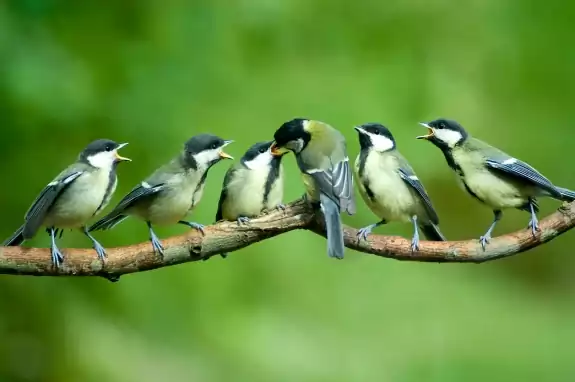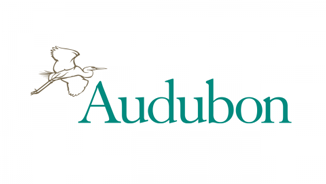
Posted April 4th 2020
Addressing Climate Change Through Bird Conservation

Posted April 4th 2020
Addressing Climate Change Through Bird Conservation
“It’s time—past time—that we start paying attention.”
—Luke DeGroote on birds and climate change (National Geographic)
Ah, spring. It feels good to see the grass again doesn’t it? In fact, many of us wish that spring would come early every year. We plan tropical escapes, check the forecast, and wish for sunshine and above-zero temperatures. However, our warm reception of warmer weather should be a tentative one: bird populations across the globe must contend with changes in habitat, breeding season, and food resources as the earth grows warmer. Even small changes in seasonal temperatures can affect natural cycles in the environment. A report by David King and Deborah M. Finch of the US Forest Service, which examines how climate change affects North American bird species, explores how climate changes influences bird nesting cycles, food availability, and ultimately, survival rates.
Unbeknownst to us humans, birds synchronize their behaviours to temperature and season. The synchronic nature of bird behaviour is evidence that migrant species depend on specific conditions for successful reproduction and food supply. However, birds aren’t just vulnerable to climate change: Industrial development, natural predators, and natural disasters are some of the many stressors that birds face. Here at Feather Friendly®, we believe that making small changes can help support bird populations, and we can all do our part to protect the birds.
How Does Climate Change Affect Birds?
You might wonder how an early spring could be bad for birds, including migratory ones. Shouldn’t birds be OK in warm weather if they migrate? Despite our human yearnings for higher temperatures (and drinks with umbrella garnishes), the Eco Watch reports that an early spring, even one that’s early by only a few weeks, can disrupt entire ecosystems. The bad news is that spring is arriving earlier all the time (up to six weeks early in some parts of the US).
Unusually warm temperatures in March, for example, will speed up plant and insect growth before birds have a chance to return home. Unfortunately, any sudden drops in temperature will kill insects and budding plant crop growth, which is disastrous for birds and humans, too. Birds and other wildlife that rely on plants for shelter, and insects for food, will struggle to maintain traditional breeding, feeding, and migratory rituals due to unseasonably warm weather. In fact, data collected by Massachusetts Audubon indicates that approximately 305 North American bird species have, on average, moved their wintering territory about 40 miles further North since the 1960s.
The US Forest Service warns, “If shifts in temperature take place at a more rapid rate than vegetation responses, or occur beyond the boundaries of suitable potential vegetation, then bird populations could be forced into areas of marginal habitat where they are likely to experience decreased survival and reproduction.” The solution isn’t to find new places for birds to populate, but to reduce the need for them to seek refuge outside of their natural habitats.
What We Can Do to Help
As bird conservation enthusiasts, we are committed to providing commercial and residential customers with valuable information and tools to help them keep bird populations safe from window collisions. But, how do we protect our bird species from climate change?
1. Use Bird Deterrent Markers on your Windows
By reducing the existing stressors that threaten birds and other ecosystems, we can help bird populations fight back. Over 1 billion birds will die from colliding with windows, and many more will die from hitting cars, wind turbines, or other structures. Outfitting your windows with Feather Friendly® Bird Deterrent Technology will prevent birds from flying into windows. So, even if you can’t fix climate change overnight, or resurrect an entire forest for the birds, you can make a conscious effort to prevent needless bird fatalities by installing our bird deterrent window markers. Many cities and residential areas are built along natural flyways that birds frequent during migration, which poses a huge threat to avian travellers. When you use Feather Friendly® bird deterrent window markers, you can save many birds from fatal window collisions, and give endangered and migrating species a chance to help their populations grow.
2. Make Your Yard Bird Friendly
If you love spending time outdoors, why not try making your yard bird friendly to provide local birds with a natural habitat? Deforestation and new developments can destroy bird habitats, so planting native plants and installing bird feeders will transform your yard into an ideal bird-friendly oasis. Audubon wants citizens and conservationists to understand that certain species’ habitats are “difficult to replicate, since the ecosystems that they are apart of can take generations to develop.” When local habitats are destroyed, birds will attempt to find food and shelter elsewhere, and potentially expose themselves to unknown predators, and man-made threats, in the process. Making your yard bird friendly helps to counteract some of the more devastating effects of climate change, while preserving small pockets of habitat for birds.
3. Reduce Your Carbon Footprint
The American Bird Conservancy (ABC) has created a comprehensive list of recommendations that governments and citizens can use to begin their own bird conservation efforts. We’ve chosen to highlight a few here that relate to mitigating energy use to reduce our carbon footprint. Have you wondered how you can be more energy efficient? It’s not just the big businesses who need to examine their energy consumption. Homeowners, schools, and even recreational centers can all reduce their carbon footprint by monitoring their energy use. Taking public transit, avoiding air travel, purchasing items locally, and even making conscious decisions about clothing brands and eating out are just a few simple ways that we can advocate for the birds and reduce climate change. Finally, supporting bird-friendly legislation is always a recommended course of action for citizens and organizations to help ignite change and to raise awareness about bird conversation issues.
Declining bird populations don’t just spell doom for endangered species: humans, too, will notice how closely bird health is linked to the environment. The US Forest Service points out that, in addition to providing “pest control, sanitation, seed dispersal and pollination” to their respective habitats, birds also support “human health and well-being,” and make important contributions to our growing economy.
Making Our Mark on Climate Change
Feather Friendly® is proud to be a part of the bird conservation movement. Just like bird behaviours are deeply embedded into the natural rhythms of nature, our own quest to decrease bird fatalities is part of a growing movement to reverse the impact of climate change. Conservation and climate change are abstract terms, and many concerned citizens, and birders, around the world might feel unsure of how to approach such an intangible threat. Feather Friendly® makes it easy to make your mark from wherever you reside, whether it be your home, home office, or are considering a future commercial installation.
Often mistaken for window films, which is a full window coverage product, Feather Friendly® DIY bird tape are individual markers installed on the outside of windows. The DIY package allows everyone the chance to reduce fatal bird collisions, while also helping to minimize the impact of climate change on bird populations. Make a change today by exploring our website or ordering your DIY tape today.
Partners
We are honoured to form partnerships with organizations who demonstrate
an ongoing commitment to bird conservation.



